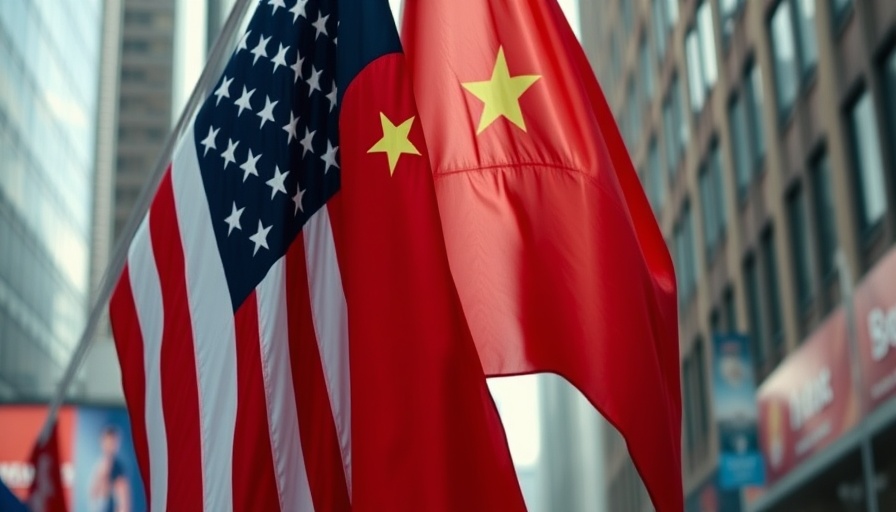
Conflicting Tariff Signals: What’s Really Happening?
In a surprising turn of events, U.S. President Donald Trump has claimed that tariff talks with China are actively underway. However, this assertion has been met with a strong denial from Beijing, leading to widespread confusion regarding the current state of U.S.-China trade relations. This latest development highlights the unpredictability surrounding Trump's tariff policies, which have created tension not only with China but with several other nations impacted by his extensive import taxes.
The Claims and Denials: A Breakdown of Statements
On Friday morning, Trump told TIME magazine that discussions with Chinese President Xi Jinping were taking place and expressed optimism about potentially reducing the 145% tariffs imposed on Chinese goods. "It would be a win if China would open up its markets for U.S. products," Trump stated, indicating a willingness to negotiate terms that could ease the financial burden on American consumers and businesses.
In stark contrast, China's foreign ministry swiftly rebuffed Trump's claims. A statement issued by the Chinese Embassy highlighted that no consultations or negotiations regarding tariffs were occurring at the moment. "The U.S. should stop creating confusion," the statement emphasized, showcasing the ongoing diplomatic rift between the two powers.
Interpreting the Implications of Tariff Policies
The conflicting narratives coming from both sides raise significant questions about the future of the U.S.-China trade relationship. Trump's aggressive tariff strategy has sparked debates about its efficacy and potential consequences on global economic stability. Experts warn that such uncertainty can hinder economic growth, as businesses remain cautious about investing and planning amid evolving trade dynamics.
Historically, tariffs have been tools used to protect domestic industries, but they can also lead to increased prices for consumers. As Trump continues to push for opening Chinese markets, it remains to be seen whether his administration will maintain a consistent approach or continue to shift tactics, leaving other stakeholders in limbo.
Global Reactions and Economic Perspectives
In the global arena, the divergent declarations have implications that reverberate beyond U.S. and Chinese borders. Other nations affected by Trump's tariffs, which include numerous developed and developing countries, are also closely monitoring the situation. For instance, countries such as Mexico, Canada, and EU members have all found themselves attempting to negotiate terms that could mitigate the harsh effects of existing tariffs.
There is a growing sense among international economists that uncertainty in trade can be detrimental to global economies, especially when inflation rates are already under pressure. The interconnectedness of global markets means that any instability can lead to a domino effect, impacting supply chains and commodity prices worldwide.
Public Sentiment and Political Ramifications
The ambiguity surrounding Trump's statements directly impacts public perception and confidence in government policy. Many Americans are grappling with how these tariffs affect their daily lives, notably in the prices of goods and potential job security in affected industries. Political analysts suggest that continued inconsistencies may lead to increased scrutiny of Trump's trade policies in upcoming elections, drawing greater attention from constituents who prioritize economic stability.
With diverse opinions emerging from business leaders and workers, the conversation about trade policy is becoming more crucial. The need for clarity in communication and policy formulation is evident as citizens seek assurance regarding their economic prospects.
Looking Ahead: The Future of U.S.-China Trade Relations
As the situation unfolds, several scenarios could influence the trajectory of U.S.-China relations. Analysts propose a spectrum of possibilities ranging from continued stalemate to a potential thawing of tensions, contingent on future negotiations. The international focus now turns to how both nations will either choose to de-escalate tensions or allow them to fester further.
With impending tariffs and trade agreements potentially on the horizon, both sides will have to navigate a precarious path to foster a productive dialogue. The stakes are high, with global economic recovery hanging in the balance.
Conclusion
In navigating the murky waters of international trade, clarity and consistency are paramount. Stakeholders from all sectors need to remain informed and engaged as this situation develops. Understanding the broader implications of President Trump’s statements can shape not only economic policy but also our everyday lives as both consumers and citizens. Seeking informed perspectives will be crucial as we watch how these complex negotiations continue to evolve.
 Add Row
Add Row  Add
Add 




 Add Row
Add Row  Add
Add 

Write A Comment